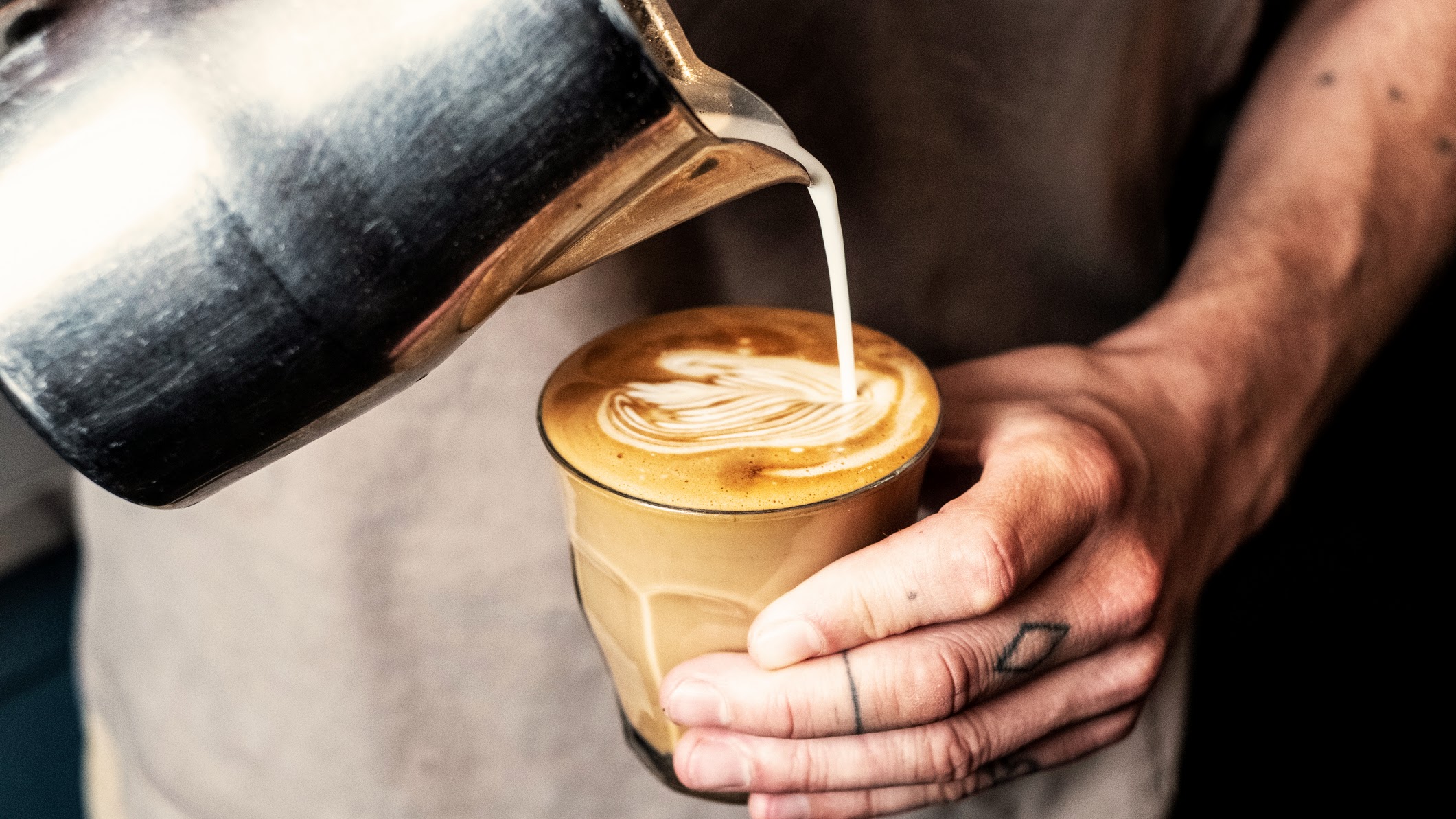Originally conceived in Italy, this hot milky beverage is now a firm favorite around the globe. Taking a plain milk-laced coffee up a gear, a good latte is made with frothy hot milk topped with a thin layer of milk foam.
- Espresso maker – e.g. a Pod machine, espresso machine, portable espresso machine, or Stovetop espresso maker
- Milk frother (if not featured on your espresso machine)
- Coffee beans, pods, or grounds
- Coffee grinder (if required)
- Mug or latte glass
- Steel jug
- Thermometer (optional)
- Milk or milk substitute
The base of any latte is a shot of espresso, so you will need to invest in an espresso maker to create this drink at home. The best espresso machines come with a built-in steam wand. The Nespresso Virtuo Creatista is perfect, but you can buy separate milk frothers if you don’t want to replace an existing espresso machine.
Mastering the barista art of drawing hearts or flowers on the top of your latte is not essential when learning how to make a latte—you can always cheat using latte stencils and a sprinkle of cocoa powder to impress guests! However, it will help considerably if you have the right coffee-making tools for the job.
In this easy five-step guide, we walk you through the latte-making process, throwing in a few tips to help you achieve barista-grade results. It may take a little practice compared to what you can get from the best coffee makers—especially when it comes to the final foamy top—but once you have mastered how to make a latte, you’ll never be tempted to throw a splash of cold milk into your coffee again.
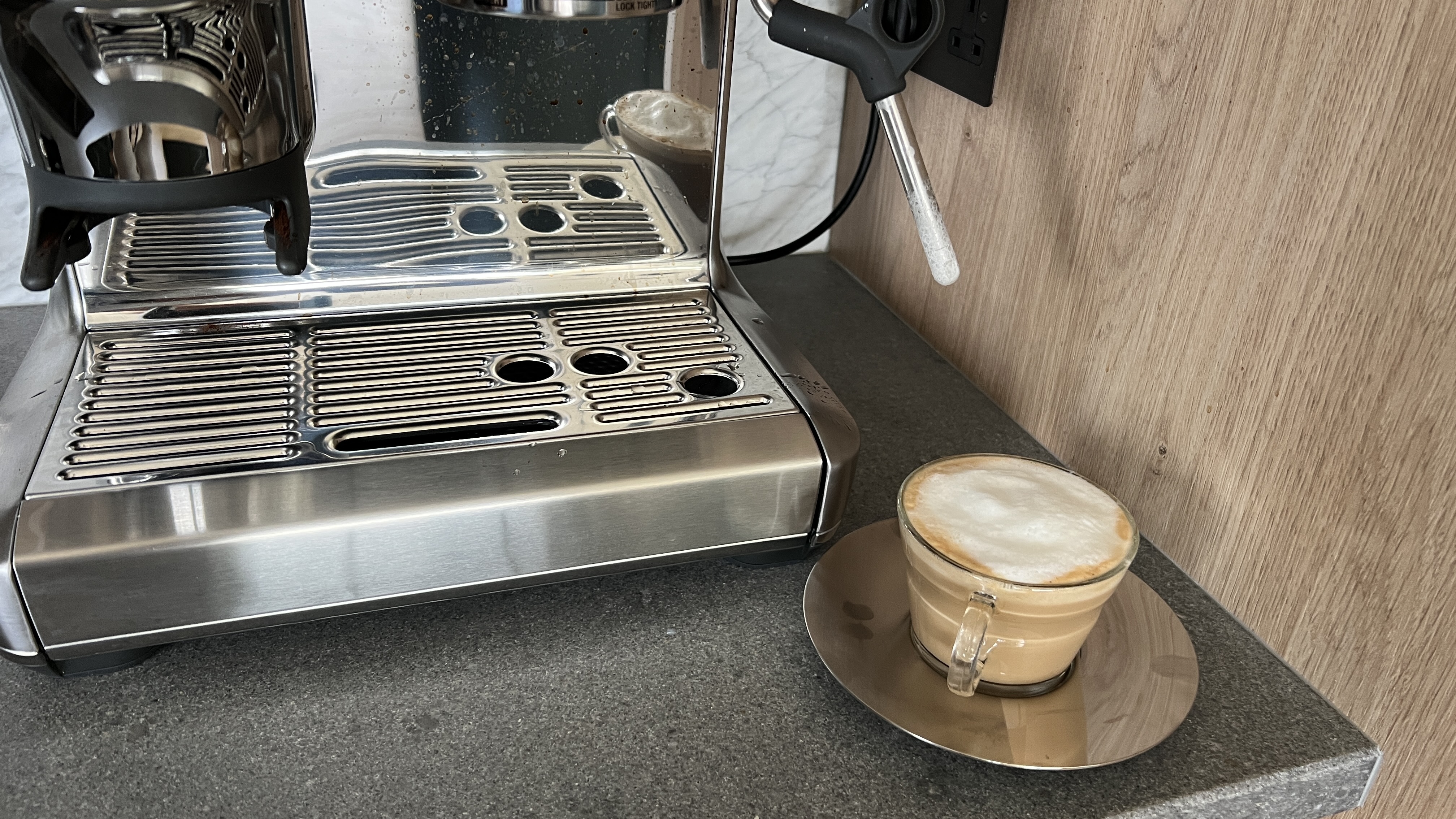
How to make a latte: Quick steps
- Brew an espresso – one shot is standard but go for two if you like.
- Steam the milk, ensuring a good aerated, foamy mix.
- Add sweetener or flavor – totally optional.
- Pour in the steamy milk.
- Finish with a topping of milk foam.
Step by step guide: How to make a latte
1. Make an espresso
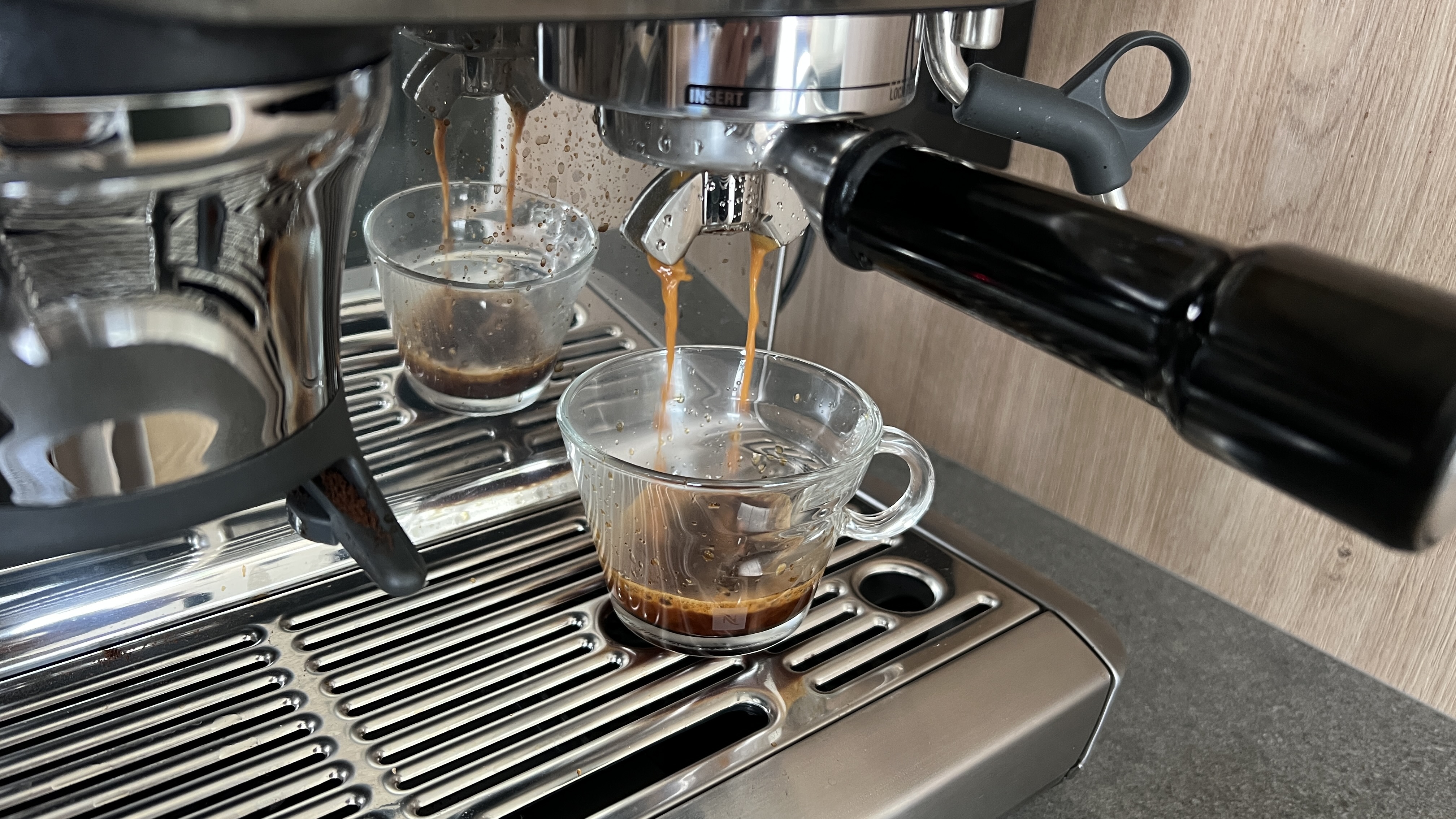
If you are a latte fan, you probably already have an espresso machine with a built-in steam wand, whether an all-singing, all-dancing bean-to-cup countertop appliance or a press-and-go pod machine.
You may also make espresso on a stovetop maker, which is how many Italians still prefer to make espresso at home. However, you must invest in a separate milk frother machine to create a latte.
However you make your espresso, aim for one shot per 10-12oz cup of latte. For most people, one shot of espresso is sufficient for a latte, but it’s not unusual to double up. Why not try both and see which you prefer?
- Tip: Quality coffee beans are essential for perfectly extracted espresso. Look for dark Arabica beans that have been recently roasted for freshness. If pre-ground, go for a medium-fine ground that’s not too coarse or fine. Espresso suitability is usually stated on the packaging. The caffeine strength level is your call!
2. Steam the milk
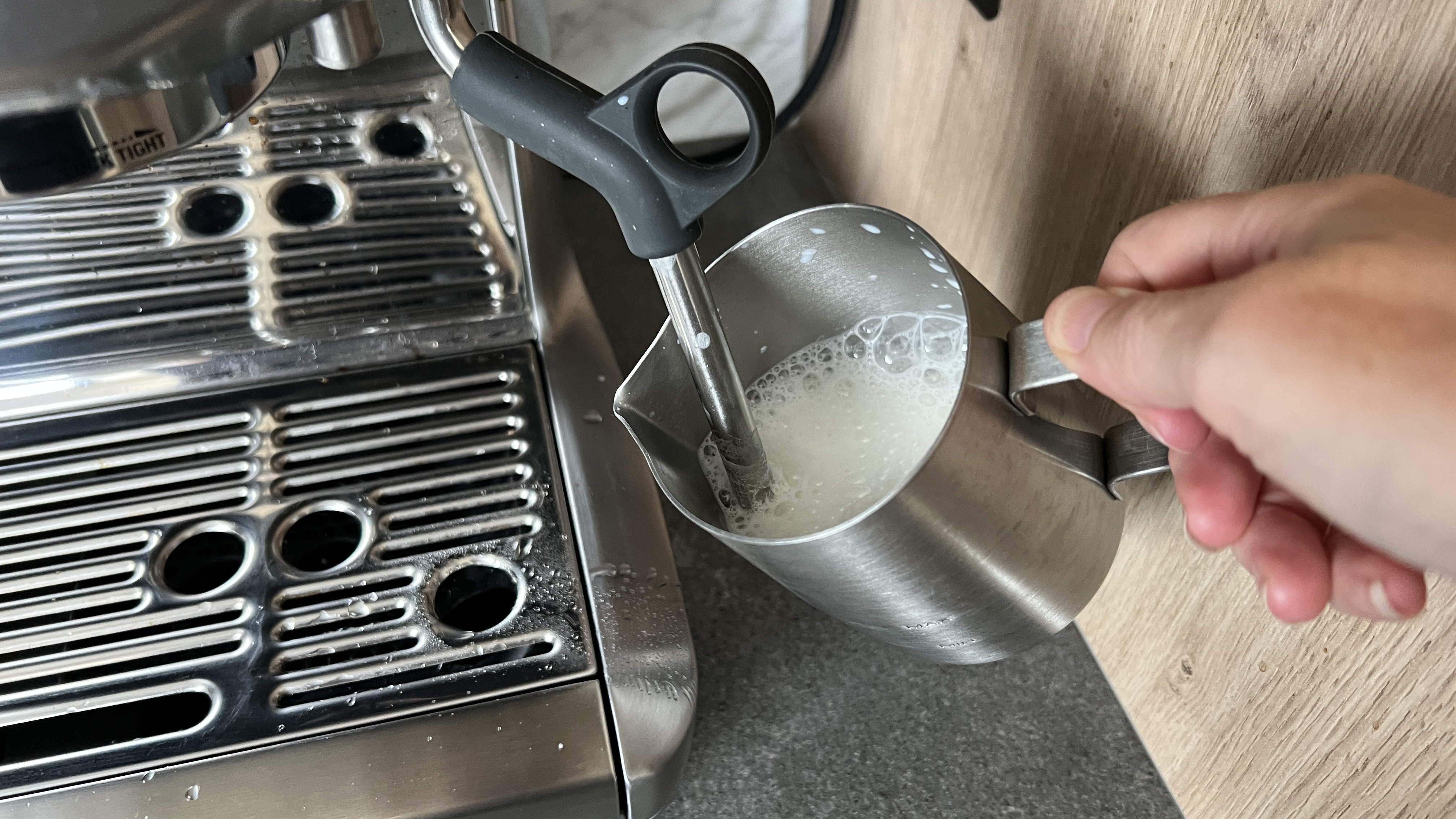
Pour 150ml of milk into a steel jug; it shouldn’t be more than half full. (The amount of milk you use should be steered by the size of your coffee mug.) Purge your steam wand by letting it run for a few seconds to clear water from the pipe. Then, insert the steam tip 1-2cm below the surface of the milk towards one side with the jug at an angle. This should produce a vortex effect.
With the milk spinning, slowly lower the jug to bring the tip of the steam wand closer to the surface, slightly breaking the surface and then back in a few times. This will introduce air and help texturize the milk. Keep steaming until the volume increases, but not so long after the milk boils.
The milk is at the correct temperature of 140-149F when the exterior of the jug is too hot to comfortably touch but not boiling. Use your thermometer if preferred. There should be a 2-3cm layer of foam on top.
- Tip: You can also make a latte using your preferred milk substitute – oat milk is popular due to its neutral flavor, but coconut milk, almond milk, and soy milk will also foam well.
3. Add flavor, if desired!
Purists will tell you that adding sweetener or flavoring to lattes is sacrosanct. We say life can always be sweeter, and many people find unsweetened latte too bitter. You do you.
Flavored lattes are essentially regular lattes with added flavoring. Popular options include vanilla, raspberry, and caramel syrups, as well as alcoholic liqueurs like Irish cream or Kahlua. Add a simple sweetener like sugar, agave, stevia, or maple syrup.
Whether sweetening or flavoring, the time to do it is now, after the espresso has been poured and before the milk goes in. Give it a gentle stir, not dissipating the espresso’s crema.
4. Pour the milk onto the espresso
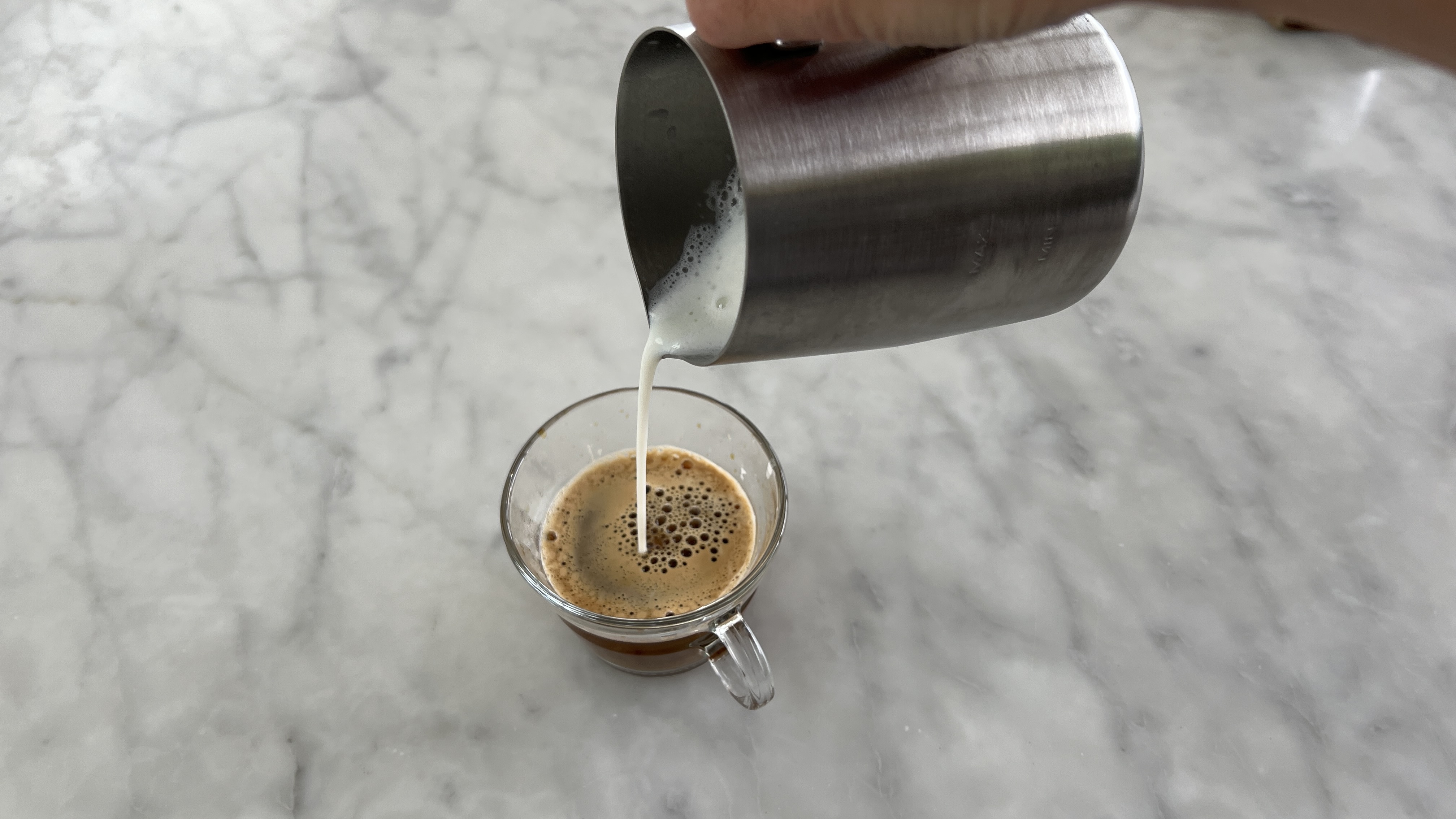
Tap the jug on the countertop to collapse any air bubbles. Swirl the jug to polish and re-invigorate the foamy texture, and then pour the milk directly onto the espresso. Pour from a reasonable height and lower gradually until the jug spout is virtually on the mug rim. You need to work quite quickly to prevent the milk from separating.
5. Add the foam
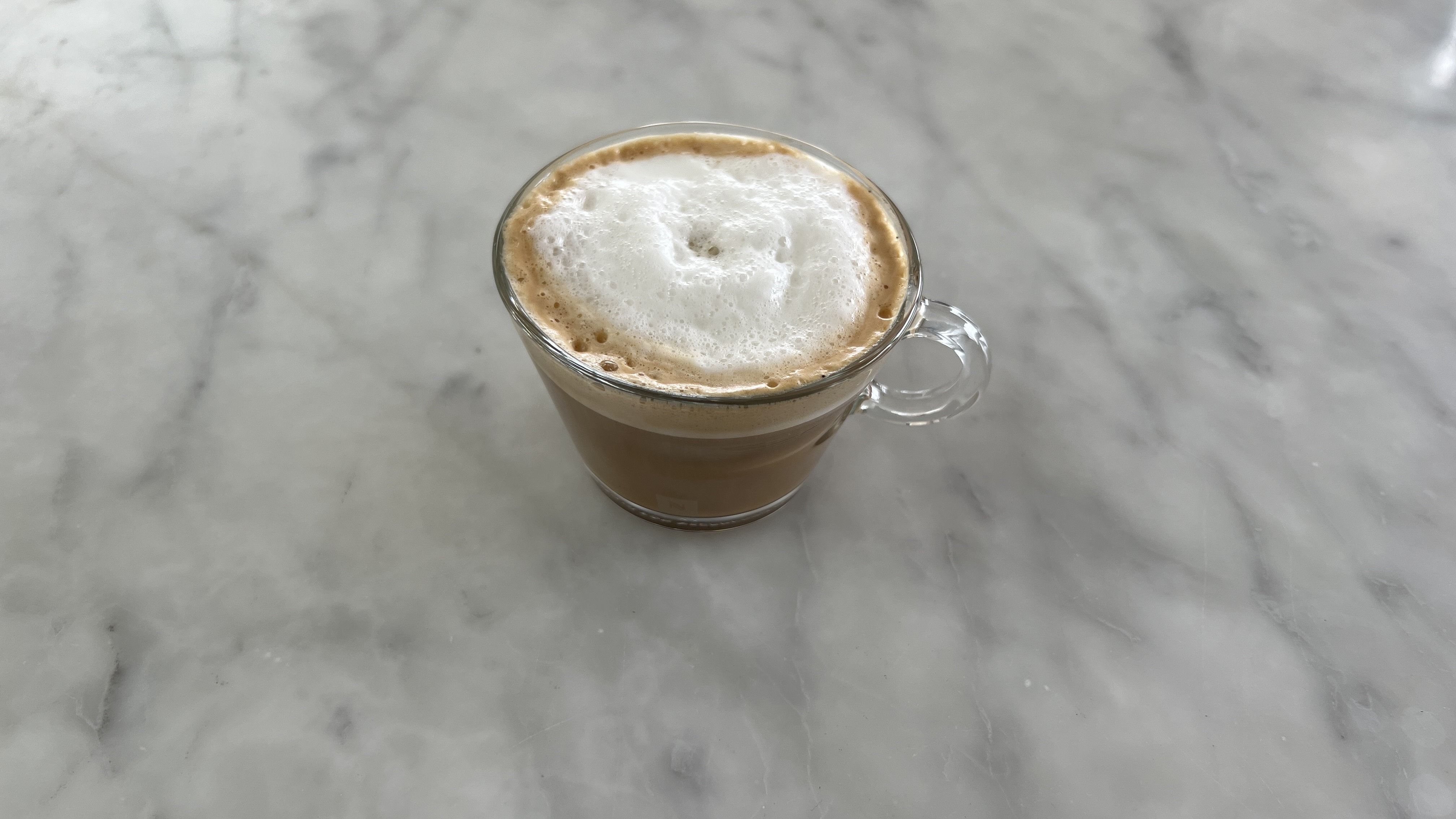
A thick layer of foamy milk should be left at the bottom of the steel jug. To get it into the mug, you might need to give it a light bang on the countertop to release its hold, or it may slide in. Aim for the center of the mug to distribute foam evenly. For a smooth surface, just run a knife over the top.
Once you have mastered the latte process, you can try your hand at latte art. The best place to start is by watching a heart art tutorial on YouTube. I tried it and quickly realized there’s a reason professional barista training exists!
FAQs
Can you use regular coffee to make a latte?
Technically, lattes are made using espresso, known for its strength and flavor. You can make a latte using filter or even instant coffee, but it will taste better if you go for a strong brew by spooning in extra grounds or instant powder.
You don’t need an expensive espresso machine to enjoy a latte at home. A simple manual espresso press, like the AeroPress, does a great job for less than $40. To make foamy milk without a steam wand, simply pour milk into a watertight container, shake for a couple of minutes, and then heat, uncovered, in the microwave.
What is the ratio of coffee to milk in a latte?
Typically, the ratio of coffee to milk in a latte is around 1:3, which is one part espresso to three parts milk, with a thin foam layer on top. However, it is a matter of personal taste. I prefer a stronger coffee flavor, so I will always go for less milk at a ratio of one part espresso to two parts milk.
What is the difference between cappuccino and latte?
While cappuccino and lattes are made from the same ingredients, the main difference is that a cappuccino has a much thicker layer of foamed milk and less steamed milk than a latte. The ratio would be more like one part espresso, one part steamed milk, and one part foamed milk.
As less milk is mixed into the espresso, a cappuccino tends to have a more pronounced coffee taste. It’s also popular to add a dusting of chocolate powder to the foamy top of a cappuccino, which makes it a little sweeter.
For milky, creamy coffee, think latte. For thick and foamy, think cappuccino.
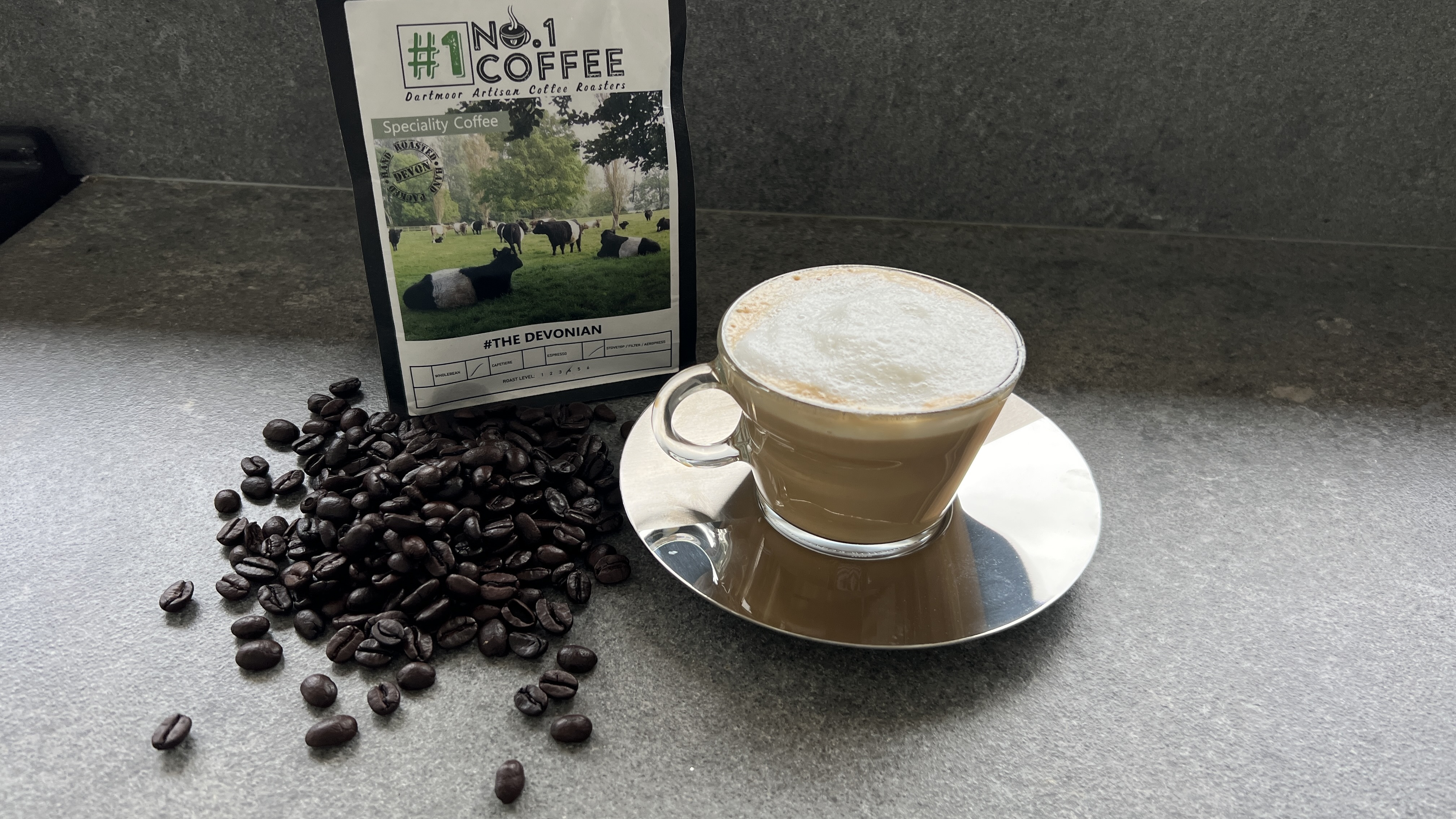
Final thoughts
Making a latte at home takes a little practice, and although not essential, the process will be much easier if you have a decent espresso machine with an integrated steam wand to hand. Suppose you can get your head around the milk froth and foam situation. In that case, you’ll be rewarded with a delicious silky drink and potentially save thousands per year compared to buying a daily latte from your local barista.
Plus, a nicely presented latte in a smart glass vessel (with a Biscoff on the side) feels a little more grown-up and ‘treaty’ than simply pouring cold milk into an instant mug. A lovely way to start the day.
